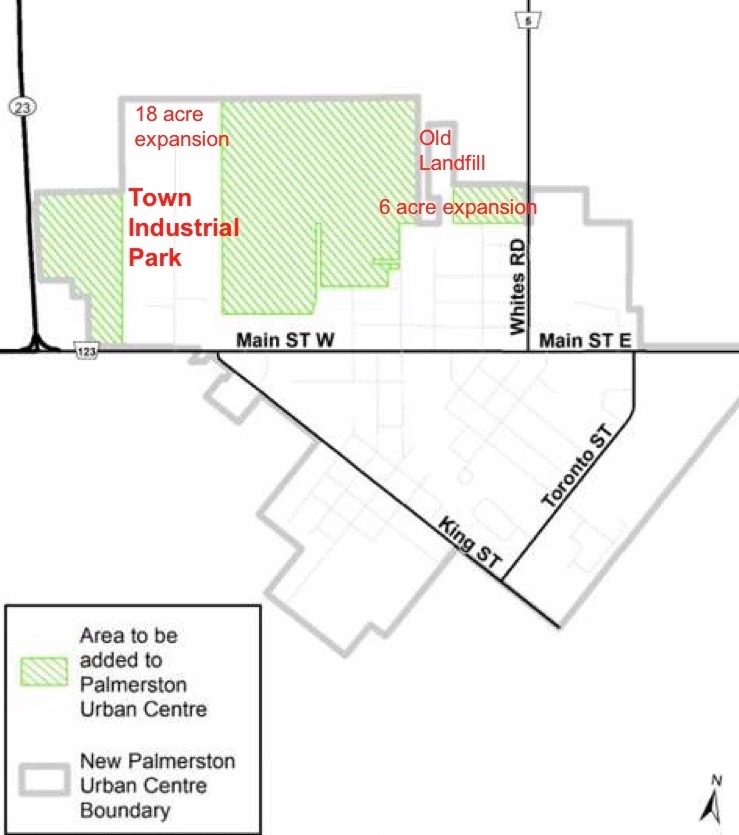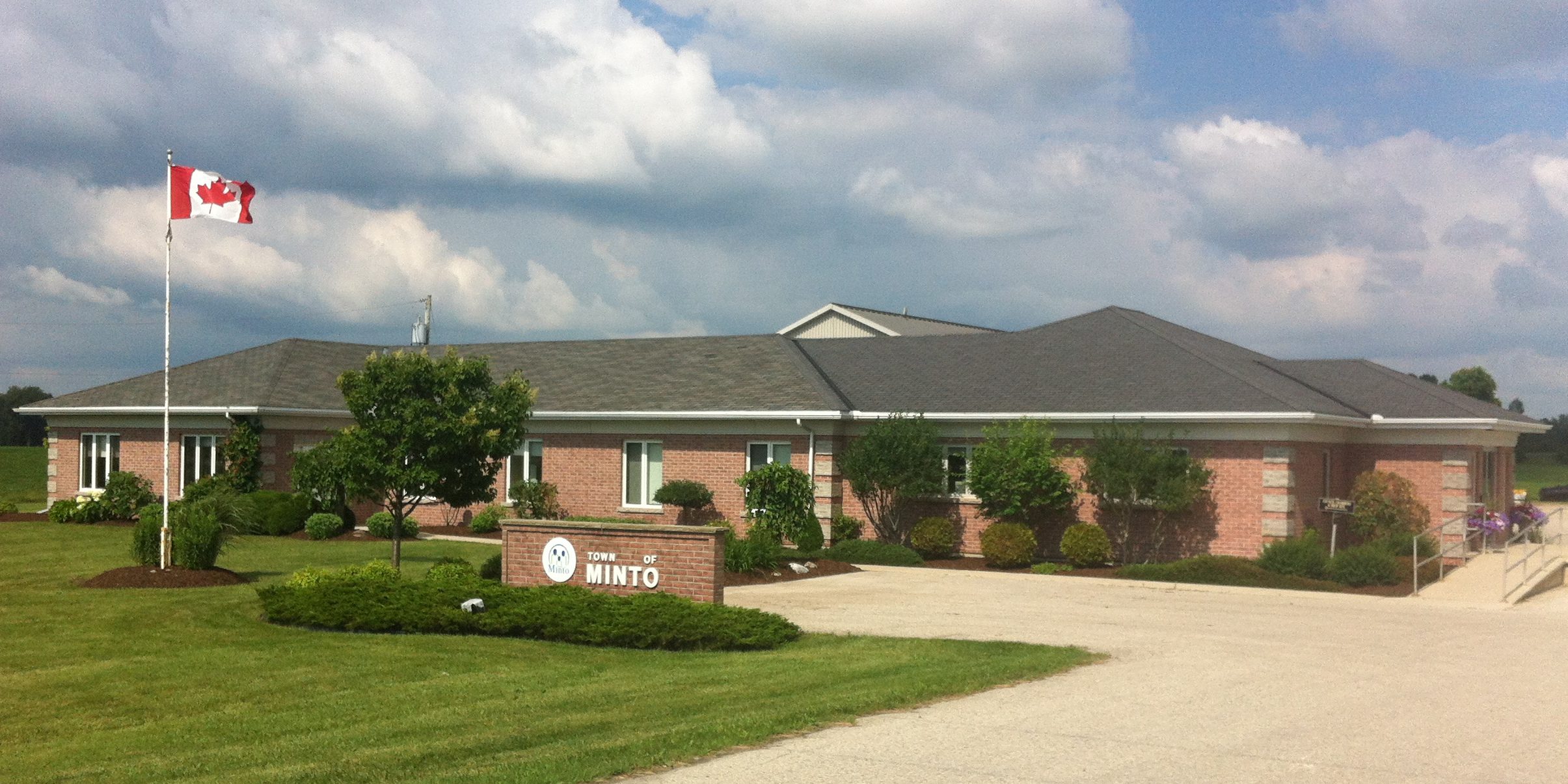MINTO – The Town of Minto will file an application for an amendment to the Wellington County Official Plan to increase the urban boundary of Palmerston in order to accommodate projected growth in that community.
At the same time, the proposal would result in a decrease in the urban boundary areas of Harriston and Clifford.
Triton engineering senior planner Bill White presented a report on the proposed changes at the Oct. 6 council meeting, which was held via video conference.
In 2017, the town began secondary planning work in Clifford and Palmerston to prepare for the county’s 2020 five-year official plan review, White explained.
The North Clifford Secondary Plan identifies enough land to meet the 165-unit residential county growth allocation to 2041.
The West Palmerston Secondary Plan went to council in April 2018 with an informal public consultation that September.
It proposed a Palmerston urban boundary expansion to ensure enough serviceable land to meet the county’s 635-household growth projection and addressed availability of serviced industrial land.
The secondary plan proposes policies on future roads, trails, land use, servicing and reducing the 500m setback from old closed landfill east of the planning area.
In May of 2019 the province changed the Growth Plan for the Greater Golden Horseshoe to allow small urban boundary expansions outside formal five-year official plan reviews.
This meant the Palmerston urban boundary could grow without waiting several years while the county reviewed its entire official plan, White stated in his report.
In October of 2019, Council proposed reducing the Clifford urban boundary to support expansion in Palmerston, and requested an engineering study to address the 500m setback from the closed landfill.
Early in 2020 staff met with Clifford landowners for feedback on boundary changes, while lands for trade-off were examined, such as un-serviced town-owned industrial property in Harriston.
White advised council the county supports an 81.5-hectare (202 acre) Palmerston urban boundary expansion, but only in conjunction with a 75-hectare (185 acre) urban area decrease elsewhere.
White explained a 56-hectare (146-acre) reduction in urban boundary can be achieved by removing farmlands at the south end of Clifford and lowlands around the village’s sewage lagoons and John Hobleman Park.
White said the reduction would still allow for more than 200 units of residential growth in north Clifford.
“Well over what we need to meet the need in the future,” he said.
A 15-hectare (38-acre) reduction to the urban boundary in Harriston can be achieved by excluding town-owned industrial lands near the Harriston sewage lagoons.
White said the plan would still allow for future servicing of 46 acres for industrial use and the town can continue to implement a Class EA approved in 2017 to expand Harriston Industrial Park.
In addition, he stated, “I can assure you that over 400 (residential) units can be created to meet the 400 units needed (in Harriston) through to 2041.”

White said the 202 acres of land earmarked for the Palmerston urban boundary expansion are north and west of White’s Road and Main Street and east of Highway 23.
“With that land being added to the urban boundary there would be enough residential land to meet the 635 acres needed in Palmerston so this is a very critical expansion,” White told council.
He also noted industrial land lost in Harriston would be applied into Palmerston, “so there’s also room to expand the industrial park.”
In addition, White said an engineering analysis on the former Palmerston landfill site confirmed the setback could be reduced from 500m to 30m, opening up that land for residential use.
“If the 500 metres had remained, half that land … to the west and the north, would not be developable,” he pointed out.
Councillor Judy Dirksen asked if the boundary changes would be locked in or if changes could be made in the future if needed.
“What if in 10 years we find out things are not as they were thought to be, or things don’t turn out the way they’re guessed to be?” she asked.
“What recourse is there? Can things get switched around again?”
While assuring council they would have options to change things in the future, White suggested it was unlikely to be necessary.
“As we go through the five-year review, I think Minto might want to talk to the county about whether this is enough, particularly the way that things are clipping along in Palmerston,” White stated.
Deputy mayor Dave Turton said the projected pace of expansion is remarkable.
“Twenty-one years isn’t a long time and it’s really hard to fathom looking at the future land use of west Palmerston to think that all that land will be full of houses and industries,” said Turton.
“But you look at the last 20 years, or look at the last eight years or five years – it’s been crazy.”
White noted a public meeting will be required on the proposal, but the county’s five-year official plan review is already underway.
He also pointed out a recent change to the provincial growth plan now requires the county to conduct population forecasts up to 2051.
“Planning for another 10 years of growth is another 500 units and you should keep that in the back of your mind,” White told council.
“The good news is this expansion doesn’t get mired down in all that discussion. It can go ahead now.”
Mayor George Bridge noted the current provincial government has taken a pro-growth attitude for small towns, in line with recent trends that see people migrating to rural Ontario from larger centres.
“We’re already seeing it. We’re seeing more and more people coming from big urban centres now that they can work from home, they can do other things – we’re seeing a big push out to our area,” Bridge stated.
Council directed that an application for an Official Plan amendment for the Palmerston Urban Boundary Expansion be filed with the county based on the report from Triton Engineering and other support documentation.




